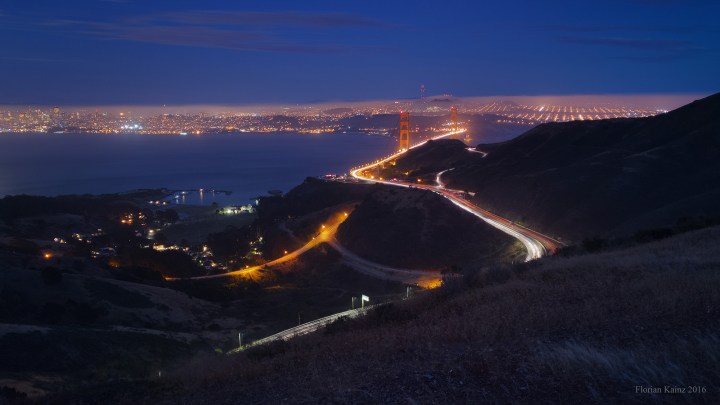
After Florian Kainz, of Google Research’s Gcam team, showed his co-workers a night landscape he’d shot with a DSLR, he was challenged to take the same photo, but with a smartphone. The result? A peek at a shooting and editing process, which he documented in a Google blog post, could eventually wind up in future Google smartphones, like the Pixel.
Kainz took inspiration from the HDR+ mode that combines multiple smartphone photos for better quality, as well as SeeInTheDark, an experimental app that produces low-light images by merging photos and dropping the resolution to a single megapixel. Using similar multiple-shot techniques, Kainz set out to see if he could shoot a photo in the dark but without the noisy images from SeeInTheDark or the limitations of HDR+.
He decided to use a similar bracketing method of merging multiple photos together to get better – and brighter – results. Unlike the automatic HDR+ feature, he merged long exposures instead of images taken at a tenth of a second, using the smartphone’s longest available shutter speed (four seconds for the Nexus 6P and two seconds for the Pixel). The longer exposures would be brighter and merging multiple brighter photos would produce better results, he theorized.
But first, he had to tackle the challenges all cameras face in the dark: focusing. Cameras need light to focus, which means even DSLR users need to switch to manual focus to shoot at night. Kainz then had to program an app that allows the camera’s focus to be manually set. For landscape photos, setting the camera’s focus at infinity worked for most of the subjects he shot, he wrote. The app also allowed him to control the shutter speed and ISO, as well as shooting in DNG, a type of digital negative with more control over the editing process.
Manual camera apps aren’t anything new, but Kainz’s experimental app also shot up to 64 single photos with one press of the shutter button – over six times the maximum ten frames the HDR+ will capture. To test the app, he shot at a number of locations during the light of a full moon as well as nights with no moon.
Kainz was able to successfully shoot low-light shots with detail not possible before, including capturing the Milky Way.
The result? While the resolution still isn’t the same as a DSLR, Kainz was able to successfully shoot low-light shots with detail not possible before, including capturing the Milky Way.
While the process still requires a tripod, Kainz says an app that could handle the merging of those 64 photos could make low-light photography from a smartphone more accessible, even for users that have no idea how to merge 64 photos or how to use layer masks. “Trying to find out if phone cameras might be suitable for outdoor nighttime photography was a fun experiment, and clearly the result is yes, they are,” he wrote. “However, arriving at the final images required a lot of careful post-processing on a desktop computer, and the procedure is too cumbersome for all but the most dedicated cellphone photographers. However, with the right software a phone should be able to process the images internally, and if steps such as painting layer masks by hand can be eliminated, it might be possible to do point-and-shoot photography in very low-light conditions.”
Kainz doesn’t say whether Google is working on an app that could do all the heavy processing without a desktop computer, but he says the software might just be possible. To see the rest of the shots from the experiment, check out Kainz’ Google Photos album.
Editors' Recommendations
- The 15 most important smartphones that changed the world forever
- Profoto puts sunshine in your pocket with photo studio-quality smartphone lights



